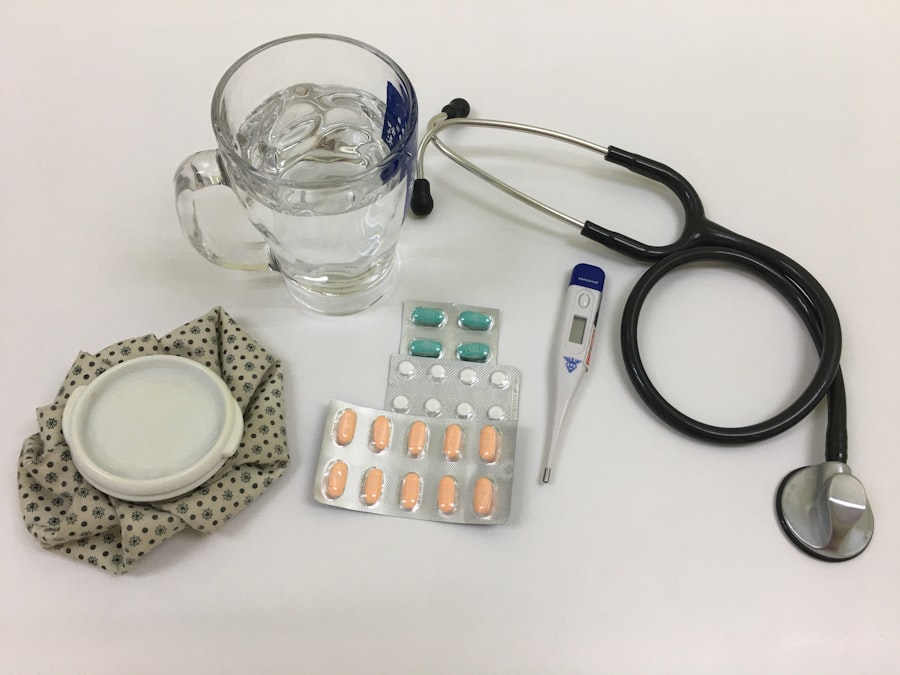
The role of nurse practitioners (NPs) has evolved significantly over the past few decades, emerging as a vital component of the healthcare system. NPs are advanced practice registered nurses who possess the education and training to provide a wide range of healthcare services. They are equipped to diagnose and treat medical conditions, prescribe medications, and manage patient care, often serving as primary care providers.
This evolution has been driven by a growing recognition of the need for accessible healthcare, particularly in underserved areas where physician shortages are prevalent. As healthcare systems adapt to meet the demands of an aging population and increasing chronic disease prevalence, the role of NPs has become more prominent and essential. The profession is characterized by its blend of nursing and medical practices, allowing NPs to bridge the gap between nursing and medicine.
This unique position enables them to offer holistic care that addresses not only the physical but also the emotional and social aspects of health. The versatility of NPs allows them to work in various settings, from hospitals and clinics to schools and community health organizations. As healthcare continues to evolve, the demand for nurse practitioners is expected to grow, making it an attractive career choice for those interested in making a meaningful impact in the lives of patients.
Key Takeaways
- Nurse practitioners play a crucial role in providing primary and specialty healthcare services to patients across the lifespan.
- To become a nurse practitioner, individuals must complete a master’s or doctoral degree program in nursing and obtain national certification in their chosen specialty.
- Nurse practitioners have the authority to diagnose and treat medical conditions, prescribe medications, and provide patient education and counseling.
- Nurse practitioners can work in a variety of settings including hospitals, clinics, private practices, and community health centers.
- The salary and benefits for nurse practitioners are competitive, with opportunities for advancement and professional development.
Education and Training Requirements for Nurse Practitioners
Foundational Education
The journey begins with obtaining a Bachelor of Science in Nursing (BSN) degree, which provides essential knowledge in nursing theory, patient care, and health assessment.
Licensure and Experience
Following the completion of a BSN, aspiring NPs must pass the National Council Licensure Examination for Registered Nurses (NCLEX-RN) to obtain their nursing license. This licensure is crucial as it allows individuals to practice as registered nurses, which is a prerequisite for further education.
Advanced Education and Training
Candidates typically pursue a Master of Science in Nursing (MSN) or a Doctor of Nursing Practice (DNP) degree, which focus on specialized areas of practice, such as family health, pediatrics, or gerontology. The curriculum includes advanced coursework in pathophysiology, pharmacology, and health assessment, along with clinical training that provides hands-on experience in diagnosing and treating patients. Many programs also require students to complete a capstone project or clinical practicum, which further enhances their practical skills and prepares them for real-world challenges.
Scope of Practice for Nurse Practitioners

The scope of practice for nurse practitioners varies by state and is influenced by local regulations and healthcare policies. Generally, NPs are authorized to perform comprehensive assessments, order diagnostic tests, interpret results, and develop treatment plans. They can also prescribe medications, including controlled substances, which allows them to manage a wide range of health conditions effectively.
This autonomy in practice is particularly beneficial in primary care settings where NPs often serve as the first point of contact for patients. In addition to clinical responsibilities, NPs play a crucial role in patient education and advocacy. They are trained to educate patients about their health conditions, treatment options, and preventive measures.
This educational aspect is vital in promoting health literacy and empowering patients to take an active role in their healthcare decisions. Furthermore, NPs often collaborate with other healthcare professionals to ensure comprehensive care delivery, making them integral members of multidisciplinary teams.
Job Opportunities and Settings for Nurse Practitioners
| Setting | Job Opportunities |
|---|---|
| Hospitals | High |
| Primary Care Clinics | High |
| Specialty Clinics | High |
| Long-term Care Facilities | High |
| Home Health Care | High |
Nurse practitioners have a diverse array of job opportunities across various healthcare settings. They can be found in primary care clinics, specialty practices, hospitals, urgent care centers, and even telehealth services. In primary care settings, NPs often manage chronic diseases such as diabetes and hypertension while providing routine preventive care services like vaccinations and health screenings.
Their ability to build long-term relationships with patients enhances continuity of care and fosters trust. Specialty practices also offer exciting opportunities for NPs. For instance, those who specialize in pediatrics may work in children’s hospitals or outpatient clinics focusing on child health issues.
Similarly, NPs in gerontology may provide care in nursing homes or assisted living facilities, addressing the unique needs of elderly patients. The rise of telehealth has further expanded job opportunities for NPs, allowing them to provide care remotely and reach patients who may have difficulty accessing traditional healthcare services.
Salary and Benefits for Nurse Practitioners
The financial compensation for nurse practitioners reflects their advanced education and critical role within the healthcare system. According to data from the U.S. Bureau of Labor Statistics (BLS), the median annual wage for nurse practitioners was approximately $117,000 as of May 2022.
However, salaries can vary significantly based on factors such as geographic location, years of experience, and area of specialization. For instance, NPs working in metropolitan areas or high-demand specialties like acute care may command higher salaries compared to those in rural settings or primary care roles. In addition to competitive salaries, nurse practitioners often enjoy a comprehensive benefits package that includes health insurance, retirement plans, paid time off, and continuing education allowances.
Many employers recognize the importance of work-life balance and offer flexible scheduling options to accommodate the personal needs of NPs.
Professional Organizations and Resources for Nurse Practitioners

Advancing the NP Profession
The American Association of Nurse Practitioners (AANP) is one of the largest organizations dedicated to advancing the NP profession through advocacy, education, and research. AANP provides resources such as continuing education opportunities, networking events, and access to clinical practice guidelines that help NPs stay current with best practices in patient care.
Specialty Organizations
In addition to AANP, there are numerous specialty organizations that cater to specific areas of practice. For example, the National Association of Pediatric Nurse Practitioners (NAPNAP) focuses on advancing pediatric nursing practice through education and advocacy efforts tailored to children’s health issues.
Fostering a Sense of Community
These organizations not only provide valuable resources but also foster a sense of community among nurse practitioners, allowing them to connect with peers who share similar interests and challenges.
Challenges and Rewards of a Nurse Practitioner Career
While a career as a nurse practitioner can be incredibly rewarding, it is not without its challenges. One significant hurdle is navigating the varying scope of practice regulations across different states. Some states grant full practice authority to NPs, allowing them to operate independently without physician oversight.
In contrast, others impose restrictive regulations that limit their ability to practice autonomously. This inconsistency can create barriers for NPs seeking to provide optimal care in certain regions. Additionally, nurse practitioners often face high levels of responsibility and workload demands that can lead to burnout if not managed effectively.
The increasing complexity of patient cases requires NPs to stay informed about evolving medical guidelines and treatment protocols continually. However, despite these challenges, many NPs find immense satisfaction in their work. The ability to make a tangible difference in patients’ lives—whether through managing chronic conditions or providing preventive care—fuels their passion for the profession.
Future Outlook for Nurse Practitioner Careers
The future outlook for nurse practitioner careers appears promising as healthcare systems increasingly recognize the value that NPs bring to patient care. According to projections from the BLS, employment for nurse practitioners is expected to grow by 45% from 2020 to 2030—much faster than the average for all occupations. This growth is driven by several factors: an aging population requiring more healthcare services, an emphasis on preventive care, and ongoing physician shortages in many areas.
As healthcare continues to evolve with advancements in technology and changes in patient needs, nurse practitioners will likely play an even more significant role in shaping the future landscape of healthcare delivery. The expansion of telehealth services has already demonstrated how NPs can adapt to meet patients’ needs remotely while maintaining high-quality care standards. As they continue to advocate for policy changes that enhance their scope of practice and address healthcare disparities, nurse practitioners will remain at the forefront of transforming healthcare into a more accessible and patient-centered system.
If you are interested in learning more about Nurse Practitioners and their careers in the USA, you should check out the article “Nurse Practitioners: Careers in the USA” on Careers in the USA. This website provides valuable information on various career paths and opportunities in the United States, making it a great resource for those looking to advance their careers in the healthcare field.
FAQs
What is a Nurse Practitioner (NP)?
A Nurse Practitioner (NP) is an advanced practice registered nurse who has completed advanced education and clinical training beyond the requirements for a registered nurse (RN). NPs can diagnose and treat illnesses, prescribe medications, and provide primary and specialty healthcare.
What are the educational requirements to become a Nurse Practitioner in the USA?
To become a Nurse Practitioner in the USA, individuals must first complete a Bachelor of Science in Nursing (BSN) degree and become a licensed registered nurse (RN). They then need to complete a Master of Science in Nursing (MSN) or a Doctor of Nursing Practice (DNP) program with a focus on a specific NP specialty, such as family practice, adult-gerontology, pediatrics, or psychiatric-mental health.
What is the scope of practice for Nurse Practitioners in the USA?
The scope of practice for Nurse Practitioners in the USA varies by state. In general, NPs are authorized to diagnose and treat illnesses, order and interpret diagnostic tests, prescribe medications, and provide primary and specialty healthcare services. Some states also allow NPs to practice independently without physician oversight.
What are the job prospects for Nurse Practitioners in the USA?
Job prospects for Nurse Practitioners in the USA are excellent, with the demand for NPs expected to grow significantly due to an aging population, increased access to healthcare services, and a shortage of primary care physicians. NPs can work in a variety of settings, including hospitals, clinics, private practices, and community health centers.
What is the average salary for Nurse Practitioners in the USA?
According to the U.S. Bureau of Labor Statistics, the median annual wage for Nurse Practitioners in the USA was $111,680 as of May 2020. Salaries can vary based on factors such as experience, specialty, geographic location, and the type of healthcare setting.






